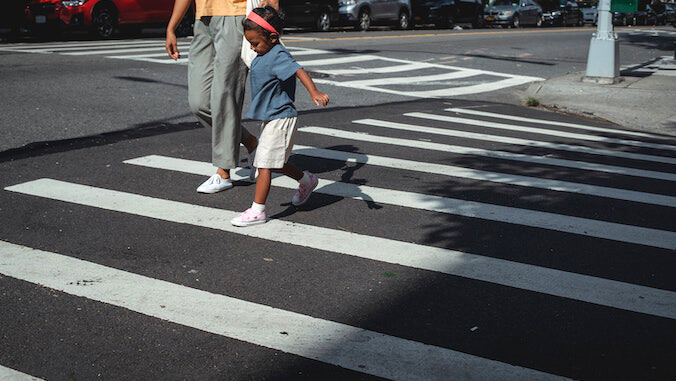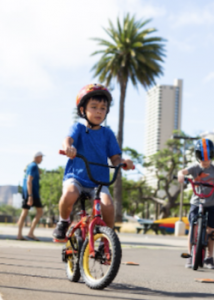
Pedestrian deaths are on the rise in Hawaiʻi and the nation, but it is easy to miss that statistic when local newspapers and television stations cover the traffic crashes as isolated events. In reality, crash fatalities are often the result of dangerous travel conditions that disproportionately impact people walking and bicycling due to their increased vulnerability. While policy and built environment solutions exist, funding and attention is lacking. This is according to a study released by the University of Hawaiʻi at Mānoa’s Healthy Hawaiʻi Initiative Evaluation Team.
The researchers analyzed how media coverage of such crashes could be contributing to the problem. The study screened hundreds of news articles covering Hawaiʻi crash events that occurred in 2019, reporting on 164 crash events that represented 57 unique events.

The team found that the local media coverage often missed the opportunity to frame traffic fatalities involving people walking and bicycling as a public health problem that can be prevented. Media reports were relatively brief, and they tended to focus on the person walking or bicycling without mentioning the driver or vehicle. For example, an article titled “Man in serious condition, dog dead after crash in Hawaiʻi Kai” could be rephrased as “Driver hits pedestrian and kills his dog in Hawaiʻi Kai crash.”
Moreover, the study found that 25% of articles subtly assigned blame to the person walking or biking by suggesting that the person could have acted differently to evade the incident. A common example of this was stating that the pedestrian was not in a marked crosswalk—without consideration of whether a marked crosswalk was available in the area for the pedestrian to use.
Reframing media narratives
Modifying media reports has the power to generate more support for public health solutions, researchers said.
“Our study confirms and builds upon previous research done at the national level showing that media coverage disregards the humanity of pedestrians and bicyclists in traffic crash articles. It also serves as a benchmark of local media coverage and provides insights into how reporting can be improved,” said lead author Brooke Keliikoa, a faculty member in the Office of Public Health Studies at UH Mānoa.
Study collaborator CJ Johnson from the Hawaiʻi State Department of Health added, “Reducing traffic violence and reimagining mobility that is safer, healthier, more just and more sustainable requires reconsidering our narratives. And that starts with our media narratives. This research shows that there is a critical need for local media to emphasize the vulnerability of pedestrians and bicyclists, consider environmental weaknesses and solutions, and frame the issue as a public health concern. By reporting on the contributing contextual and systematic factors, the media can better support policy and environmental change that protects these vulnerable road users.”
Best practice recommendations by WHO
According to the article, the World Health Organization (WHO) provides best practice recommendations for media coverage that recognizes these traffic crashes as the public health problem that they are, increases public awareness of the issue and directly influences the implementation of solutions by policy makers and other stakeholders.
“The WHO suggests writing stories that demonstrate newsworthiness by focusing on the human element, describing the big-picture relevance, placing statistics in context, identifying contributing factors and root causes, and being solutions-oriented,” the researchers stated.
Researchers hope that their studies conducted at the local level can allow for recognition of the nuances relevant to specific regions and inform more targeted interventions to improve the public health framing of local media coverage.
The study was published in Transportation Research Interdisciplinary Perspectives. Keliikoa and Johnson’s co-authors on the study were Mika Thompson, Stephanie Cacal, Catherine Pirkle and Tetine Sentell of the UH Mānoa Thompson School of Social Work & Public Health.
This research is an example of UH Mānoa’s goal of Excellence in Research: Advancing the Research and Creative Work Enterprise (PDF), one of four goals identified in the 2015–25 Strategic Plan (PDF), updated in December 2020.

